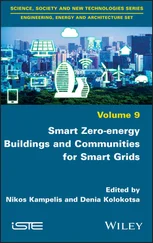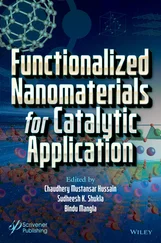UK
www.iste.co.uk
John Wiley & Sons, Inc.
111 River Street
Hoboken, NJ 07030
USA
www.wiley.com
© ISTE Ltd 2021
The rights of Pierre Camille Lacaze and Jean-Christophe Lacroix to be identified as the authors of this work have been asserted by them in accordance with the Copyright, Designs and Patents Act 1988.
Library of Congress Control Number: 2021941647
British Library Cataloguing-in-Publication Data
A CIP record for this book is available from the British Library
ISBN 978-1-78630-497-1
The term “nanomaterials”, by general consensus, is used to designate both nano-objects and nanostructured materials. To qualify as a nanomaterial, the dimensions of an object or of a structural element of a macroscopic material must be less than about one hundred nanometers. In addition to this first, generic definition, a distinction is made between zero-dimensional nanoparticles (0D-NP); nanowires (NW) and nanotubes (NT), which are one-dimensional (1D-NP); nanosheets and multi-sheets, which are two-dimensional (2D-NP); and, finally, three-dimensional (3D) nanostructured materials. Further distinctions are made between these forms based on their material composition: carbonaceous, inorganic or hybrid.
I.1. History of nanotechnology
Nanotechnologies first came into public view in the year 2000. This was the year the National Nanotechnology Initiative 1, or NNI, was launched in the United States, propelled by the NSF (National Science Foundation), a large number of academic societies and multiple federal departments. The new and innovative properties of nanomaterials discovered over the course of the 1980s and 1990s opened a vast range of perspectives in terms of applications, attracting the attention of researchers and industrialists, who began to devote considerable time and attention to exploiting these new opportunities. These initiatives attracted almost unprecedented support from public authorities, and President Clinton, visiting Caltech in January 2000, specifically designated this initiative as a national developmental priority. Different fields of application were defined in collaboration with several government agencies, who also provided funding; this new area of research was seen as a likely source of significant scientific progress with the potential to benefit the whole of society.
Why, then, did nanotechnology attract such levels of attention from the US government in the early 2000s? Without going into too much detail, it is important to note that the 1980s and 1990s were marked by a number of important scientific discoveries relating to extremely small elements; this went hand-in-hand with technological developments which greatly increased the capacity to observe the state and performances of materials.
Transmission electron microscopy (TEM) was first commercialized by Siemens and Ernst Ruska 2and continued to develop over the following decades. By the 1990s, TEM performance had reached a level where it was possible to observe objects on a nanometric scale [RUS 86]. Scanning electron microscopy (SEM) developed in parallel, although commercial applications appeared at a later stage; this technique is based on the analysis of reflected secondary electrons. The first apparatus was launched onto the market by Cambridge Scientific Instruments in the 1960s. SEM makes it possible to observe the texture of material surfaces at nanometric level, constituting a breakthrough in terms of observing nano-objects in 3D.
The decisive breakthrough into the “nanoworld”, however, was not made until the mid-1980s. Rohrer and Binnig’s invention of near-field microscopy [ROH 86], including scanning tunneling microscopy (STM) and atomic force microscopy (AFM), marked a further step in the observation of sub-nanometric objects: the long-pursued goal of atomic-level observation had finally been attained. These new microscopy techniques, which now play a central role in the study of nanomaterials, were increasingly used to produce high-resolution images. Compared to classic TEM and SEM techniques, they also present a practical advantage in that they do not need to be used in a vacuum, and can indeed be used in “everyday” atmospheric conditions.
These technological innovations in the field of observation went hand-in-hand with the discovery of new materials, on a nanometric scale, which displayed entirely new physical and chemical properties due to their very smallness. Thus, in 1985, Kroto et al . (Nobel Prize winners in 1996) discovered fullerenes: new carbon nanomaterials with exceptional properties [KRO 85]. The first fullerenes were obtained in the form of traces; they are now produced commercially on a large scale. Fullerenes consist of a spherical assembly of carbon atoms, assembled in hexagon and pentagon shapes. Often considered as “electron wells”, they have particularly interesting chemical properties and are widely used in various domains, notably in plastic photovoltaic cells; their application in this field in the 1990s resulted in significant gains in energy yield [YU 95].
A few years later, in Japan, Lijima [LIJ 91] discovered the tubular structure of carbon nanotubes (CNTs), then of single wall carbon nanotubes (SWCNTs) [BET 93], which also consist of a hexagonal assembly of carbon atoms. These nanotubes vary from one to several nanometers in diameter, and have a length of several hundred nanometers. As we shall see later, the mechanical properties of these nanotubes largely surpass those of steel; furthermore, they also possess exceptional electronic properties.
These discoveries rapidly attracted the attention of scientific agencies in the United States. An ambitious program of fundamental and applied research into nanotechnologies was launched in the year 2000, with both scientific and industrial support. A series of directives and recommendations issued by the NNI attracted attention on the world stage, and a number of other nations launched their own initiatives, highlighting the strategic importance of the domain.
The scale of technological research increased considerably from the early 2000s on, and the number of publications in connection with nanomaterials or nanotechnologies continues to grow. While the creation and use of nanometric elements in the field of electronics are well established, other fields, including chemistry, the energy sector, biology and medicine, stand to make considerable gains from the progression of nanotechnologies. New fields of investigation are opened up on a regular basis, and their results look highly likely to revolutionize both theoretical knowledge and practical applications in these domains.
I.2. Outline of this book
Our main aim in this book is to highlight new breakthroughs and areas of research in nanotechnologies which have appeared in recent years, notably since 2010; however, we shall begin by presenting a brief overview of earlier discoveries, essential to understanding later work. Many of the new findings presented here have yet to be used commercially, but their interest in terms of research and potential future applications is immense.
We have chosen to focus on problems and solutions relating to the energy sector. Our discussion is split into two parts: first, a description of nanomaterials and their properties, and second, a discussion of the ways these materials are, or may be, used in the energy sector for storage and conversion, electrocatalysis and photocatalysis.
Chapter 1is devoted to the subject of carbon nanomaterials, and includes a description of recent preparation methods, properties and major applications. Some of these materials (fullerenes, carbon nanotubes, nanodiamonds, etc.) largely predate the year 2000. However, they are yet to reveal all of their secrets, notably in terms of the remarkable properties they possess and in new contexts of application. Twodimensional families of nanomaterials, derived from graphene, are a far more recent discovery; graphene itself looks set to become the star material of the 21st century. More recently still, the family of 2D carbon composites has expanded to include materials such as graphdiyne, with a huge range of potential applications.
Читать дальше












